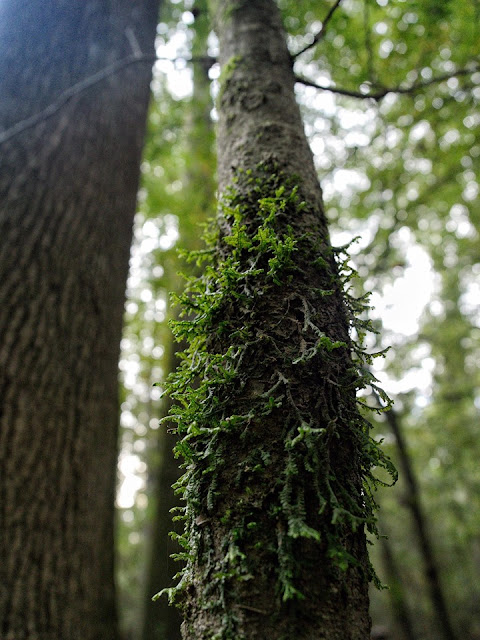I feel readers of this blog are owed an update, after the incredible journey my brother Brian and I have shared here over the last several years. This will likely be the last entry, unless news comes to me of pertinent developments regarding the Ivorybill in the Pascagoula River Basin.
While I have not made any updates to this site in well over a year, Brian and I have both together and separately made several forays into the area, usually in areas we have already explored. We did manage a day in the field in the past year in an area new to us, in the extreme south end of the Pascagoula River WMA, not far from its border with Ward Bayou WMA. Images from that trip, and others, can be found in my brother's photography page on Facebook, called The Humble Hiker.
Many readers may not be aware of the significant impact of Hurricane Zeta on the Pascagoula River Swamp, which occurred in late October of last year. Many of the roads and trails were rendered impassable by downed timber, and some were only barely cleared in time for the beginning of the state's annual deer hunting season a month later. Again, Brian's photography page on Facebook provides some images of the destruction, including an update on our favorite baldcypress, the Ancient of Days, and how he fared through the tempest.
I suppose the end of this blog begs the question: do I think there are Ivorybills still in the Pascagoula River Swamp? I honestly do not know. I have seen some things that I could not explain, which at best suggested the presence of the species; but never did we find definitive evidence. But we were searching for the proverbial needle in a haystack, and moreover a needle that could easily move. I remain open to the possibility that Ivorybills still live there, and am convinced that the area is one of the last best places for its continued survival.
My hope with the blog was always to provide a record for others who might attempt a search of the area. The Pascagoula River Swamp is a vast, changing landscape, and information can rapidly become outdated, or lost. Perhaps others will trek the Swamp, and find useful the information contained in these digital leaves.
We did not find the Ivorybill. What we did find, however, was a magical landscape that challenged and changed us in ways we could not have foreseen. I like to think I am a better soul for the experience; it is certain that I am a more humble one. I count myself fortunate to have experienced for myself this place, and letting its timelessness swallow me whole.
Thanks to Mark Michaels, who I count as a friend, and who provided invaluable guidance, especially as I was attempting to understand Ivorybill foraging behavior; Becky Lumpkin Stowe, of the Nature Conservancy, who gave us valuable advice and direction regarding locations to explore; and Dean Hurliman of Iowa, artist, hopeless romantic, and kindred spirit. Thanks also to 'Cyberthrush' for linking to us on his blog, and for other help over the years.
Thanks to all who have come here and shared in our adventure. For much of my life, I wanted to search for the Ivory-billed Woodpecker.
So, I did.
-- Chris
P.S. I think a new adventure may be beginning for me and mine. If it happens, I will let you know.


































































